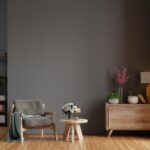Are you looking to create a serene and clutter-free living space? If so, understanding minimalist design principles is essential.
Minimalist design focuses on clean lines, simplicity, and functionality to create a calm and peaceful atmosphere in your home. In this article, we will explore how to decorate a minimalist home by discussing the core principles and elements of minimalist design, including choosing the right color palette, decluttering and organizing, selecting essential furniture pieces, incorporating natural elements, creating a functional layout, adding minimalist decor accents, and maintaining a minimalist home.
When it comes to creating a minimalist home, choosing the right color palette is crucial. We will discuss how to select neutral colors to achieve a calming and cohesive atmosphere in your living space. Additionally, we will provide tips on decluttering and organizing belongings effectively in order to achieve a minimalist look and feel at home.
Furthermore, we will explore the importance of selecting essential furniture pieces for a minimalist home. This includes multifunctional pieces with clean designs that maximize space and minimize visual clutter. Additionally, we will highlight the significance of incorporating natural elements such as wood, plants, and natural fabrics to add warmth and texture to a minimalist space.
Stay tuned for expert advice on creating a practical layout that maximizes space in your home while minimizing visual clutter. Lastly, we will provide suggestions on how to incorporate minimalist decor accents such as geometric shapes and statement lighting to add personality and interest to your minimalistic space.
Choosing the Right Color Palette
When it comes to decorating a minimalist home, choosing the right color palette is crucial in creating a calming and cohesive atmosphere. The key to selecting the perfect color palette for a minimalist space is to opt for neutral tones that are both soothing and visually appealing. Here are some tips on how to achieve the ideal color scheme for your minimalist home:
- Stick to Neutrals: Choose neutral colors such as whites, beiges, grays, and soft pastels for the walls, furniture, and decor in your minimalist home. These colors will help create a sense of tranquility and harmony within the space.
- Layer Different Shades: Incorporate various shades of neutral colors to add depth and dimension to the space. For example, you can mix different tones of white or gray to create visual interest without overwhelming the minimalist aesthetic.
- Add Accents of Color: While neutrals are the foundation of a minimalist color palette, you can also introduce subtle accents of color such as muted blues, greens, or earthy tones through accessories or textiles. These accents can provide a touch of warmth and character to the space without disrupting its minimalistic appeal.
By following these tips, you can effectively select a neutral color palette that will help create a calming and cohesive atmosphere in your minimalist home.
In addition to choosing the right colors for your minimalist home, it’s also important to consider how natural light interacts with your chosen color palette. Natural light plays a significant role in defining the ambiance of a space, especially in minimalism where simplicity and clarity are key elements.
To make the most of natural light in your minimalist home:
- Opt for Light-Reflective Surfaces: Choose furniture with reflective surfaces or glossy finishes that can bounce natural light around the room, making it feel brighter and more spacious.
- Use Sheer Window Treatments: Instead of heavy curtains or blinds that block out natural light, opt for sheer or translucent window treatments that allow sunlight to filter through while maintaining privacy.
- Position Mirrors Strategically: Place mirrors across from windows or in areas where they can reflect natural light, effectively doubling its impact in brightening up the space.
Incorporating these strategies into your minimalist home design will not only enhance its visual appeal but also contribute to creating an inviting and serene atmosphere through the use of natural light.
Decluttering and Organizing
One of the key elements of achieving a minimalist home is effective decluttering and organizing. The first step in this process is to assess your belongings and decide what is essential and what can be let go. This may involve parting ways with items that no longer serve a purpose or bring joy, as popularized by organizational consultant Marie Kondo.
Once you have determined which items to keep, it is important to find a designated place for each item to ensure that everything has its own space and purpose. Utilizing storage solutions such as baskets, shelves, and organizational systems can help maintain order and prevent clutter from accumulating.
Additionally, when decluttering and organizing your home, consider the principles of minimalism such as “less is more” and “quality over quantity.” This means focusing on the functionality of each item and avoiding unnecessary decorative pieces or duplicates. By embracing these principles, you can create a more serene and visually appealing living space.
Another important aspect of creating a minimalist home through decluttering and organizing is to develop sustainable habits that promote tidiness. This could include regular cleaning routines, implementing a one in, one out policy for new purchases, and being mindful of what you bring into your home. These practices will help maintain the minimalist aesthetic without feeling overwhelmed by possessions.
| Minimize | Organize |
|---|---|
| Determine what items are essential | Find designated spaces for each item |
| Embrace “less is more” | Utilize storage solutions like baskets or shelves |
| Develop sustainable habits for maintaining tidiness | Avoid unnecessary decorative pieces or duplicates |
Selecting Essential Furniture Pieces
When it comes to decorating a minimalist home, selecting the right furniture is crucial to achieving the desired aesthetic. The key to choosing essential furniture pieces for a minimalist home lies in prioritizing functionality and simplicity. Here are some tips on how to select the perfect furniture for your minimalist space:
- Opt for multifunctional pieces: In a minimalist home, every piece of furniture should serve a purpose. Look for multifunctional pieces, such as a sofa bed or a coffee table with storage, that can help maximize space and reduce clutter.
- Focus on clean, simple designs: Choose furniture with clean lines and simple designs to maintain the minimalist aesthetic. Avoid ornate details or excessive upholstery and instead opt for sleek, streamlined pieces.
- Consider space-saving options: In a minimalist home, it’s important to make the most of the available space. Look for furniture that is compact and space-saving, such as wall-mounted shelves or nesting tables.
By focusing on functionality and simplicity when selecting essential furniture pieces, you can create a cohesive and clutter-free environment in your minimalist home.
In addition to the key principles of selecting essential furniture pieces for a minimalist home, it’s also important to consider the materials and finishes of the furniture. Stick to natural materials such as wood, metal, or glass, as they complement the minimalist design ethos. Avoid overly decorative or fussy finishes, and instead opt for clean and simple finishes that contribute to the overall sense of calm and serenity in your space.
When furnishing a minimalist home, it’s also crucial to prioritize quality over quantity. Invest in well-made, durable furniture pieces that will stand the test of time rather than opting for cheaply made alternatives. By selecting high-quality essential furniture pieces with longevity in mind, you can create a timeless and enduring minimalist interior that will remain stylish for years to come.
Incorporating Natural Elements
When it comes to decorating a minimalist home, incorporating natural elements is essential to add warmth and texture to the space. Natural elements such as wood, plants, and natural fabrics not only bring a sense of tranquility but also create a harmonious balance in the overall design.
Wood can be used for furniture pieces, flooring, or decor accents, adding a touch of nature to the interior. Additionally, bringing in indoor plants not only adds a pop of greenery but also contributes to improved air quality and a sense of serenity.
To achieve a minimalist look while incorporating natural elements, it’s important to focus on simplicity and functionality. Consider using natural fabrics like cotton or linen for upholstery and curtains, as they offer a timeless and understated elegance that complements the clean lines and neutral color palette often associated with minimalist design.
When selecting furniture pieces, opt for those made from natural materials such as wood or bamboo. Multifunctional pieces that serve both practical and aesthetic purposes are ideal for maintaining a clutter-free environment in a minimalist home.
Another effective way to incorporate natural elements into a minimalist space is through thoughtful accessorizing. Simple decor accents like wooden bowls or trays, rattan baskets, or jute rugs can infuse the space with warmth and texture without overwhelming the visual aesthetic. Embracing the imperfections found in natural materials adds character to the space while still aligning with the principles of minimalism.
In short, incorporating natural elements such as wood, plants, and natural fabrics plays an integral role in softening the clean lines and simplicity of minimalist design. By embracing these organic materials throughout your home, you can create an inviting environment that exudes calmness and coziness while staying true to the fundamental principles of minimalism.
| Natural Element | Usage |
|---|---|
| Wood | Furniture pieces, flooring, decor accents |
| Plants | Indoor greenery for improved air quality |
| Natural Fabrics | Cotton or linen for upholstery and curtains |
Creating a Functional Layout
Maximizing Space
When it comes to creating a functional layout in a minimalist home, maximizing space is key. One way to achieve this is by selecting furniture pieces that serve multiple purposes, such as a sofa with built-in storage or a coffee table that can also function as a desk.
Additionally, consider opting for furniture with sleek and slim designs to avoid overcrowding the space. By maximizing space through thoughtful furniture selection, you can ensure that your minimalist home feels open and uncluttered.
Minimizing Visual Clutter
Incorporating smart storage solutions is crucial for minimizing visual clutter in a minimalist home. This can include hidden storage compartments, built-in shelving, and wall-mounted organizers to keep items out of sight when not in use. Another effective way to reduce visual clutter is by maintaining clean lines throughout the space. Avoiding excessive decorative elements and keeping surfaces clear will contribute to the overall minimalist aesthetic of the home.
Creating Flow
To enhance the functionality of a minimalist layout, it’s important to create a sense of flow between different areas of the home. This can be achieved by carefully considering the placement of furniture, ensuring that there are clear pathways throughout each room. Additionally, using simple room dividers or open shelving can help delineate spaces without disrupting the overall flow of the home.
By implementing these strategies for creating a practical and functional layout in a minimalist home, you can ensure that your living space not only looks aesthetically pleasing but also supports your day-to-day activities seamlessly.
Adding Minimalist Decor Accents
When it comes to decorating a minimalist home, it’s important to strike the right balance between simplicity and personality. While minimalist design is characterized by clean lines and a lack of clutter, it doesn’t mean that the space has to be devoid of character. By incorporating minimalist decor accents, you can add personality and interest to your minimalist space without sacrificing its clean and serene atmosphere.
Geometric Shapes
One way to incorporate minimalist decor accents into your home is by using geometric shapes. Whether it’s in the form of a simple, angular mirror or a set of sleek, geometric vases, these shapes can add visual interest to your space without overwhelming it. Look for decor items with clean lines and sharp angles to complement the minimalistic aesthetic of your home.
Simple Artwork
Incorporating simple artwork is another way to inject personality into a minimalist space. Consider displaying black and white photographs or line drawings that align with the clean and understated vibe of your home. Opt for pieces that have a subdued color palette and uncomplicated compositions to maintain the overall simplicity of the space.
Statement Lighting
Lastly, statement lighting can serve as both a functional and decorative element in a minimalist home. Look for modern, sculptural light fixtures that act as focal points in your space while also providing essential illumination. Whether it’s a bold pendant light or an architectural floor lamp, statement lighting can elevate the aesthetic of your minimalist home while remaining true to its design principles.
By incorporating these minimalist decor accents, you can infuse your space with personality and interest while still adhering to the core principles of minimalism. When selecting decor items, make sure they complement the overall aesthetic of your home and contribute to its sense of calm and serenity.
Maintenance and Care
In conclusion, creating a minimalist home involves more than just decluttering and choosing the right color palette. It’s about embracing a lifestyle of simplicity and functionality. By understanding the core principles of minimalist design and incorporating natural elements, such as wood and plants, you can create a space that is both serene and inviting.
When it comes to selecting essential furniture pieces for your minimalist home, look for multifunctional pieces with clean, simple designs that serve a practical purpose. Additionally, creating a functional layout that maximizes space and minimizes visual clutter is essential in maintaining a minimalist aesthetic.
Incorporating minimalist decor accents, such as geometric shapes, simple artwork, and statement lighting, can add personality and interest to your space without overwhelming the overall design. And lastly, don’t forget about regular maintenance and care to keep your minimalist home clutter-free.
By implementing organization strategies and cleaning routines, you can ensure that your space remains serene and peaceful. With these tips in mind, you’ll be well on your way to creating a truly minimalist home that reflects your personal style while promoting simplicity.
Frequently Asked Questions
How Can a Minimalist Decorate Your House?
A minimalist can decorate their house by focusing on simplicity, functionality, and clean lines. They might choose furniture and decor with simple designs and neutral colors, avoiding clutter and excess decoration.
What Are the Colors for Minimalist Houses?
The colors for minimalist houses are typically neutral tones such as white, beige, gray, or light pastel shades. These colors create a sense of calm and simplicity, which are key elements of minimalist design.
Where Do Minimalists Put Their Stuff?
Minimalists put their stuff in designated storage spaces to keep their homes clutter-free. This could include using multi-functional furniture with hidden storage, organizing belongings in minimalistic cabinets or shelves, and keeping only essential items on display.

I’m thrilled to be your companion on this exciting journey through the world of home decor and design. With a passion for turning houses into homes and a keen eye for the finer details, I’m here to help you transform your living spaces into beautiful, functional, and meaningful havens.





